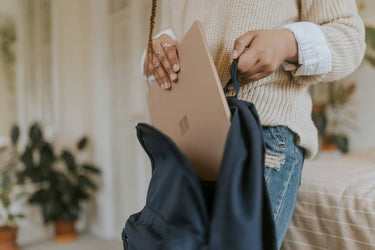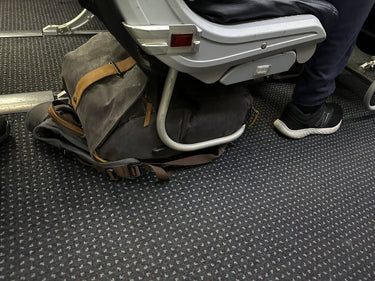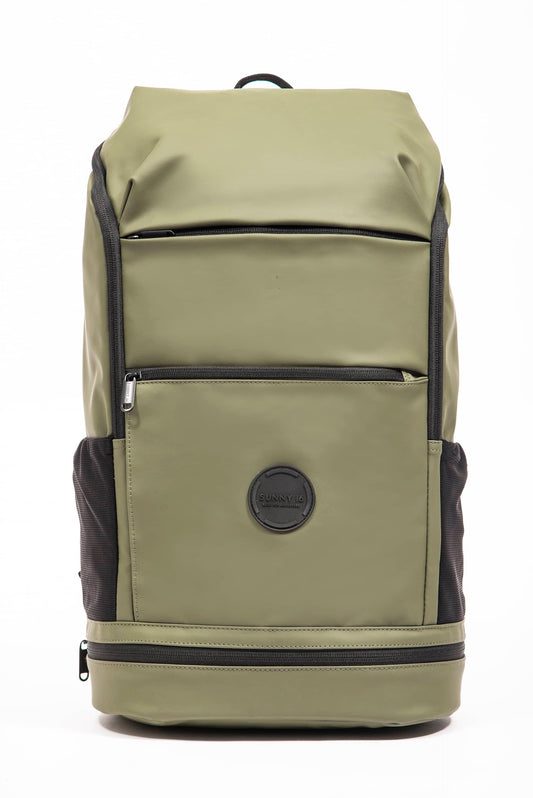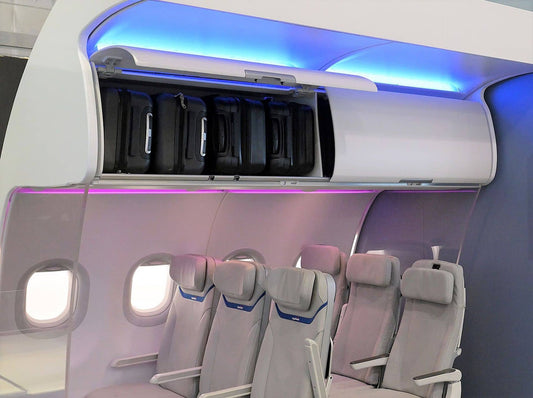
Can You Bring Toothpaste on a Plane? Everything You Need to Know
Share
Traveling can be stressful, especially when you’re unsure about what you can bring with you on a plane. One common question many people have is: Can you bring toothpaste on a plane? In this post, I’ll answer that question and more. Let’s dive in!
Can You Bring Toothpaste on a Plane?
Yes, you can bring toothpaste on a plane. But there are some rules you need to follow. Toothpaste is considered a liquid by the Transportation Security Administration (TSA). This means it has to follow the TSA’s 3-1-1 rule for liquids in carry-on bags.

How Much Toothpaste Can You Bring on a Plane?
According to the TSA’s 3-1-1 rule, you can bring toothpaste in your carry-on bag as long as it is in a container that is 3.4 ounces (100 milliliters or 100 ml) or smaller. All your liquids, gels, and aerosols must fit in a single, quart-sized, clear plastic bag. This means you need to be mindful of the size and amount of toothpaste you pack in your carry-on. Just follow the 3-1-1 liquid rule before the security checkpoint and you'll be all set.
What Size Toothpaste Can You Bring on a Plane?
As mentioned, the size of the toothpaste you can bring on a plane must be 3.4 ounces (100 milliliters) or smaller. If your toothpaste tube is larger than this, you will need to pack it in your checked luggage or buy a travel-sized tube.

Can You Bring Full-Size Toothpaste on a Plane?
No, you cannot bring full-size toothpaste in your carry-on luggage. A full-size tube of toothpaste is typically around 6 ounces or more, which exceeds the TSA’s limit of 3.4 ounces. If you really need to bring your full-size toothpaste, you will have to place it in your checked luggage.
Can You Bring a Tube of Toothpaste on a Plane?
Yes, you can bring a tube of toothpaste on a plane, as long as it follows the size restrictions mentioned above. If you stick to travel-sized toothpaste tubes that are 3.4 ounces or less, you’ll be good to go.

Why Does Toothpaste Count as a Liquid?
You might wonder why toothpaste counts as a liquid. It’s because toothpaste, like many other gel-like substances, has a fluid consistency. The TSA classifies anything that can flow or be squeezed out as a liquid or gel. This includes items like toothpaste, shampoo, lotion, and even some types of food.
Tips for Packing Toothpaste for Air Travel
- Buy Travel-Sized Toothpaste: Look for travel-sized toothpaste tubes at your local store. They are designed to meet TSA regulations and save space in your carry-on bag.
- Use a Quart-Sized Bag: Remember, all your liquids must fit in a quart-sized, clear plastic bag. This includes toothpaste, shampoo, conditioner, and other toiletries.
- Check the Expiry Date: Make sure your travel-sized toothpaste is not expired. It’s always good to check before packing.
- Pack Full-Size in Checked Luggage: If you prefer using a full-size toothpaste, pack it in your checked luggage to avoid any issues at security.
Other Toiletries You Can Bring on a Plane
While we’re talking about toothpaste, let’s also cover other common toiletries and their TSA rules:
- Shampoo and Conditioner: These must also follow the 3.4-ounce rule if you’re bringing them in your carry-on.
- Liquid Soap and Body Wash: Same as shampoo and conditioner, they must be in containers of 3.4 ounces or less.
- Deodorant: Solid deodorants can be packed in any size, but gel or spray deodorants must follow the 3.4-ounce rule.
- Razor: Disposable razors and their cartridges are allowed in carry-on bags. Safety razors are only allowed without the blade, which must be packed in checked luggage.

Why These Rules Exist
The TSA’s rules on liquids, including toothpaste, exist for security reasons. The 3-1-1 rule was created after the events of September 11, 2001, to prevent potential threats from liquid explosives. By limiting the amount and size of liquids, gels, and aerosols passengers can bring on planes, the TSA aims to ensure everyone’s safety.
My Personal Experience
I remember my first time traveling by air after the new liquid rules were in place. I had packed a full-size tube of toothpaste in my carry-on without knowing the rules. When I went through security, they pulled me aside and explained that my toothpaste was too big. I had to throw it away, which was a bit embarrassing and inconvenient.
Since then, I always make sure to pack travel-sized toiletries. It’s a simple step that saves time and hassle at the airport. Plus, it’s a good excuse to buy those cute little travel-sized items!
Wrapping up
To sum up, you can bring toothpaste on a plane, but it must be in a container that is 3.4 ounces (100 milliliters) or smaller if you’re carrying it in your carry-on bag. Full-size toothpaste should be packed in your checked luggage. Always remember the TSA’s 3-1-1 rule for liquids to make your trip through airport security smooth and stress-free.
Safe travels, and don’t forget your toothpaste!
Frequently Asked Questions
Can you bring toothpaste on a plane? Yes, you can bring toothpaste on a plane, but it must be in a container that is 3.4 ounces (100 milliliters) or smaller if it’s in your carry-on bag.
How much toothpaste can you bring on a plane? You can bring up to 3.4 ounces (100 milliliters) of toothpaste in your carry-on bag. There is no limit for toothpaste packed in your checked luggage.
What size toothpaste can you bring on a plane? The size of toothpaste you can bring in your carry-on must be 3.4 ounces (100 milliliters) or smaller. Larger sizes must be packed in checked luggage.
Can you bring full-size toothpaste on a plane? No, you cannot bring full-size toothpaste in your carry-on. Full-size tubes are usually larger than 3.4 ounces and must be placed in your checked luggage.
FInal tips about toothpaste on a plane
- TSA toothpaste rules: Always check the TSA’s guidelines before packing.
- Travel-sized toothpaste: Convenient and TSA-compliant.
- Toiletries for air travel: Make sure all your toiletries meet the TSA’s size requirements.
- Packing tips for flights: Save space and avoid issues at security by following these tips.
Remember, planning ahead and knowing the rules can make your travel experience much smoother. Happy flying!





























